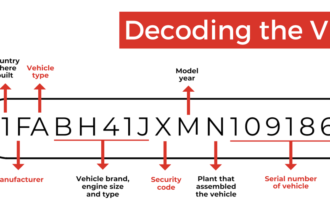Introduction to JKUHRL-5.4.2.5.1J Model
In today’s fast-paced digital landscape, businesses are constantly on the lookout for innovative solutions to harness data effectively. Enter the JKUHRL-5.4.2.5.1J model—a cutting-edge framework designed to propel organizations toward data-driven growth and efficiency. This model not only streamlines processes but also offers a unique approach to turning raw data into actionable insights that can transform decision-making.
Whether you’re a startup or an established enterprise, understanding this powerful tool could be your game-changer in navigating the complexities of modern business environments. Let’s dive deeper into what makes the JKUHRL-5.4.2.5.1J model so revolutionary and how it can reshape your organization’s future for success!
How the Model Works: Breaking Down the Acronym
The JKUHRL-5.4.2.5.1J Model is a complex structure designed to optimize data management and business strategies.
Each letter in the acronym represents a critical component of this innovative framework. “J” stands for Just-in-Time analytics, emphasizing the need for timely insights.
Next comes “K,” which signifies Knowledge-sharing processes that enhance collaboration within teams. This promotes informed decision-making across various departments.
“UHR” relates to User-centric Human Resource principles, focusing on employee engagement and satisfaction as driving factors for productivity.
Rounding off with numbers, 5.4 introduces five core operational areas followed by two performance indicators essential for measuring success.
Lastly, “5.1” encapsulates iterative improvement cycles aimed at refining processes continuously while adapting to market changes and technological advancements.
Each element plays a vital role in creating an agile model that businesses can leverage for growth and efficiency without losing sight of their strategic goals.
Benefits of Implementing JKUHRL-5.4.2.5.1J Model
The JKUHRL-5.4.2.5.1J model offers a myriad of advantages for businesses aiming to enhance their data strategies.
First, it streamlines data management processes, making information retrieval faster and more efficient. This means teams can access insights without wasting valuable time.
Second, the model fosters better decision-making through improved analytics capabilities. With precise data at hand, organizations can make informed choices that drive growth.
Additionally, implementing this framework encourages team collaboration by providing a unified platform for sharing and analyzing information.
Cost-effectiveness is another notable benefit; companies often see reduced operational costs as they optimize existing resources with this innovative approach.
Adopting the JKUHRL-5.4.2.5.1J model positions businesses ahead of competitors in an ever-evolving market landscape, enabling them to adapt quickly to changing demands.
Real-Life Examples of Companies Using this Model
Several companies have embraced the JKUHRL-5.4.2.5.1J model to drive their growth strategies.
For instance, TechSphere utilized this framework to streamline its data analytics processes, enhancing decision-making capabilities across departments. By implementing the model, they saw a significant reduction in operational costs and improved efficiency.
Similarly, EcoSmart adopted the JKUHRL-5.4.2.5.1J model for sustainable practices within their operations. This innovative approach allowed them to track environmental impact effectively while boosting overall productivity.
Another notable example is RetailWave, which integrated this model into its supply chain management system. As a result, they were able to optimize inventory levels and reduce waste significantly.
These instances highlight that diverse industries can leverage the JKUHRL-5.4.2.5.1J model for tailored solutions that meet specific business needs.
Challenges and Implementation Tips for Businesses
Implementing the jkuhrl-5.4.2.5.1j model can be daunting for many businesses. One of the primary challenges is adapting existing processes to fit this innovative framework.
Resistance from employees often hampers progress, especially if they are unfamiliar with new technologies or methods. Communication and training can ease this transition significantly.
Another hurdle is data integration. Ensuring that all systems work seamlessly together requires careful planning and execution.
To navigate these obstacles, start small by piloting the model within one department before a full rollout. This trial phase allows for adjustments based on feedback and results.
Encourage collaboration among teams to foster a culture of innovation and adaptability. Engaging employees in the process helps build buy-in and enthusiasm around change.
Utilizing expert guidance during implementation can further streamline efforts, ensuring you maximize the potential of the jkuhrl-5.4.2.5.1j model effectively.
Future Possibilities and Advancements of JKUHRL-5.4.2.5.1J Model
The future of the JKUHRL-5.4.2.5.1J model looks promising as businesses continue to seek innovative solutions for data management and growth strategies. With advancements in artificial intelligence and machine learning, this model has the potential to evolve even further, enhancing its capabilities.
As technology progresses, we can expect more integration with cloud computing services and big data analytics tools. This would allow organizations to harness real-time insights more effectively than ever before. Additionally, improvements in cybersecurity measures will make the application of this model safer for sensitive business information.
We may also see greater customization options tailored to specific industry needs emerge from ongoing research and development efforts surrounding the JKUHRL-5.4.2.5.1J model’s framework.
Moreover, collaboration between tech companies can drive innovation within this space, leading to new methodologies that support diverse businesses across various sectors.
By embracing these advancements proactively, organizations can position themselves at the forefront of their industries while maximizing the benefits derived from implementing a robust data management system like the JKUHRL-5.4.2.5.1J model.

















